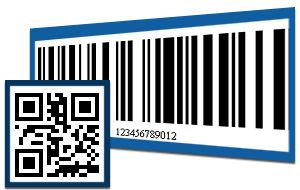Are Barcodes or QR codes better for Retailers?
Barcodes are designed to encode data about a particular product or even a group of items. Therefore, if you have a box of items, for instance, the box itself will have a different barcode than the ones on the various pairs of items. The two distinct objects exchange wholly separate pieces of information, which is the cause of this. Barcode for the product will include details on the nation where it was issued, the company that made it, and the item itself. To enable the distribution line to immediately identify the product, the data for the box, on the other hand, will probably just include the location where the item were packaged, their destination, and a tracking number.
UPC (or Universal Product Code) barcode and the Code 128 barcode are the two most frequently utilized types of barcodes when it comes to retail merchandise. Although they are quite similar, the two have very distinct purposes.
The Difference between QR codes and Barcodes

Turning over any products you have laying about will allow you to immediately see both the advantages and disadvantages of the conventional barcode. An easy and linear barcode is used. They can only hold a limited amount of information, but they are simple to create and interpret. Which number each line of a barcode encodes is determined by the difference in line and white space thickness. Your normal barcode frequently has a single, helpful value because there is just a little sticker to fit everything on.
QR codes, on the other hand, have width and height. They can hold a lot more information and do so in a systematic manner. While QR codes may store information in relative places, barcodes can only be read from left to right (above, below, next to, and so on).
What are the uses of QR codes in retail stores?
Online Checkout:
Customers may get the products they want from the store online and have them delivered right to their homes. To start the procedure, just print a QR code on the product package.
Get in Touch with Customer Service:
Use a Text QR Code or a Call QR Code to enable your consumers to contact customer service straight from the store.
Reveal Offers and Discounts:
For a smooth buying experience, connect your promotional codes to the QR code. Even better, you may have your customers use the promo code while checking out online.
Increasing Social Media Visibility:
Social networking is the most effective way to connect in the digital age. Use a social media QR code to encourage your contented consumers to follow, like, and interact with you on social media. With a QR code, you can lead your customers to your Messenger inbox.
Leave Feedback:
The inventory supported by customers is causing a stir. It has been used by shop, and there is no doubt that customers like it when businesses try to take their input into account.
What Advantages do QR Codes Have Over Barcodes?
Unlike barcodes, QR Codes are two-dimensional as they have rows and columns, which combine to make a grid of modules As a result, QR codes, can contain much more data than barcodes of equal size. Because the QR code contains more information, it appears "busier." QR codes also have error-correcting abilities, which mean that if your QR code is incomplete due to being covered by dirt or scratches, there is a higher chance that it can still be read in comparison to a barcode.
QR Codes can Hold more Information
QR code can hold up to 2500 characters, whereas a barcode can only hold up to 25. This simply means that you can include a lot more details, such as the website address of a product's page.
QR Codes can be Smaller
QR code can still be read. It can be up to ten times smaller than a barcode. And as such, you can print more information on smaller, more compact labels.
QR Codes are Easier to Read
QR code can be read from any angle, unlike a barcode, which requires you to point the scanner directly at the code. You won't have to aim the scanner exactly every time if you have a lot of items to scan.
QR Codes Work even when Damaged
There is a large error correction margin in QR codes. Therefore, the code still functions even if about 30% of it is unreadable (erased, damaged, or dirty).